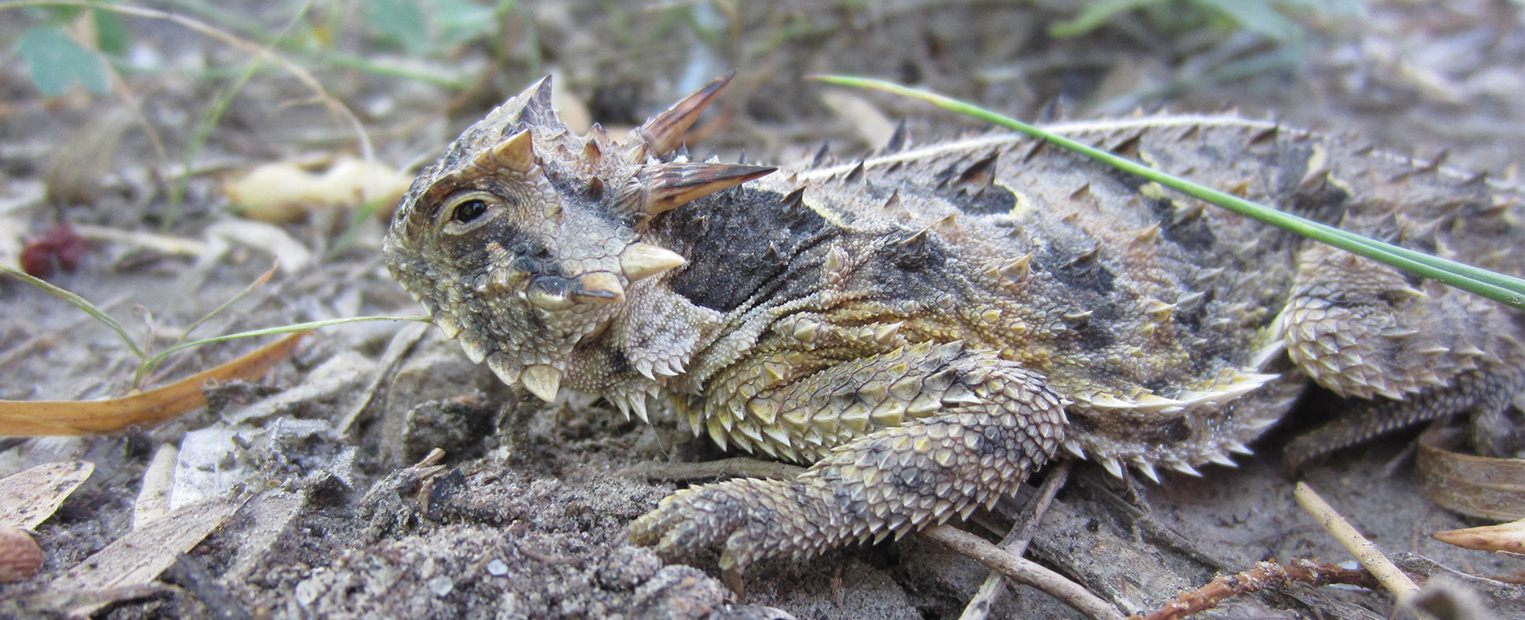A team of Texas horned lizard conservationists reached a major milestone this month with the successful release of the 1,000th captive-born reptile. Working to restore their decimated numbers, the Fort Worth Zoo partnered with the Texas Parks and Wildlife Department and TCU on reintroduction methodologies. Dean Williams has been conducting statewide genetics studies with the goal of breeding hundreds of the horned lizards in captivity and releasing them into areas where they once flourished. Following this latest development, Williams says the future for a horned frog comeback looks bright.
What specific factors have led to the declining numbers among horned lizards?
It has probably been caused by a number of different factors, which may differ depending on where they are. The big one has undoubtedly been loss of their habitat to urbanization and agriculture, especially along the I-35 corridor and east of that highway. Another factor has been the spread of invasive fire ants that have had devastating effects on ground nesting animals (they are responsible, for instance, in the decline of quail over much of Texas). Fire ants would eat the eggs of horned lizards if they found them and will even attack and eat the hatchlings. Fire ants also negatively affect other ant communities that the adults and young need for food.
What makes the Mason Mountain Wildlife Management Area the ideal habitat for this species?
The site is run by Texas Parks and Wildlife, and so these releases can be monitored closely (we are still in the experimental stage figuring out the best methodologies), but otherwise the habitat is good with lots of harvester ants for the adults to eat.
In order to ensure long-term genetic diversity at these release sites, what steps are being taken?
I have done some population genetic modeling to determine the best number of hatchlings to reintroduce, and it turns out to be in the hundreds. These large numbers were also indicated by our experience with past introductions of horned lizards by Texas Parks and Wildlife and the zoos. Horned lizards normally have high mortality (due to snake and bird predation mainly), and so you have to release a lot of them to get the population started, as well as maintain genetic variation. We are also genotyping released and captured lizards to monitor genetic diversity over time.
How is the conservation team able to assess survival rate and conditions?
I have a Ph.D. graduate student, Rachel Alenius, who is monitoring their survival, as well as determining what the hatchlings eat and whether a release site has sufficient food for them. She found last year that even sites separated by a few hundred meters can differ pretty dramatically in their food abundance and subsequent hatchling survival. This year she is following up on those results to see if the same patterns hold. I also had several M.S. graduate students (Patrick Ryan and Padraic Elliott) measuring habitat characteristics at Mason Mountain and a nearby site in the same county that naturally has horned lizards. We are currently analyzing that data.
How might the Recovering America’s Wildlife Act affect this project or projects like this one?
The hope is that it can provide funding to help raise the hatchlings in captivity, which is expensive, as well as pay for individuals to help monitor the horned lizard reintroductions. On a positive note, horned lizards released at Mason in previous years first started breeding this year. There were at least three nests that we know of. This is the first time a reintroduction program for horned lizards has reached this stage, and those hatched young are currently being tracked by Alenius.
Learn more about conservation efforts made by the Fort Worth Zoo, Texas Parks and Wildlife Department, and TCU professor Dean Williams.
